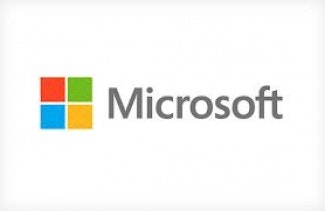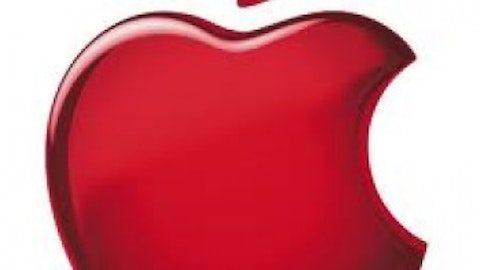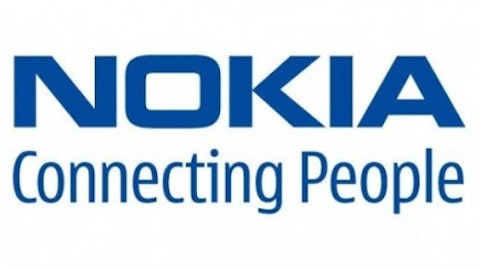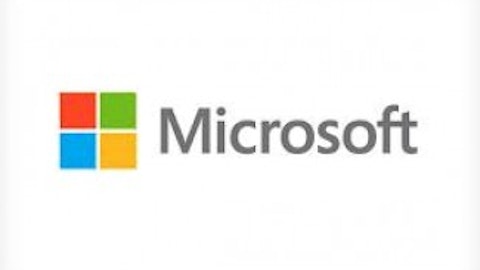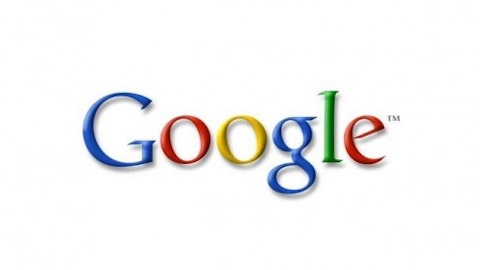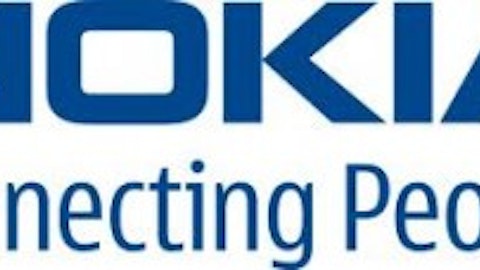Microsoft Corporation (NASDAQ:MSFT)‘s Surface tablet was released last October . It is the first attempt to bring Windows to a mobile device designed and engineered by the company itself. After being on the market for about a year, however, the tablet’s sales numbers have not been good. Yet, it seems that Microsoft Corporation (NASDAQ:MSFT) should try to at least salvage the Surface. It’s not yet a lost cause, and could still prove that Microsoft Corporation (NASDAQ:MSFT) can compete in consumer products.
How can it do this? Microsoft Corporation (NASDAQ:MSFT) needs to think outside the box. No device is worthwhile without great software. In today’s mobile device marketplace, it takes products that capture the attention of third-party developers who create apps that users want.
Dismal numbers
Microsoft Corporation (NASDAQ:MSFT) has reported bad financial numbers for the Surface. The company says it took a $900 million operating income loss on the tablet . It also reported a net income loss of $596 million on the Surface . Horrible numbers, but when you also add in the fact that Microsoft Corporation (NASDAQ:MSFT) has had to increase its cost of revenues in the Windows division, the situation looks even worse.
The company reported in its past fiscal year that is cost of revenue in the division increased $1.8 billion . A sales and marketing increase of $1 billion to market the Surface and Windows 8 contributed to a 34% increase of the unit’s spending in that category . It’s no wonder, then, that the Windows division saw a drop in operating income by 18%, from $11.5 billion to $9.5 billion last year.
Lack of developer interest
When Apple Inc. (NASDAQ:AAPL) first released the iPhone, it did not have a developer ecosystem for third-party applications. Yet it didn’t take long for the company to realize that it was software from independent developers that would make its mobile devices big. Within one week of the App Store’s launch in July 2008, users had already downloaded 10 million apps . This is where Microsoft is dealing with a big problem: Developers just don’t want to create applications for the Windows Store.
Despite Apple Inc. (NASDAQ:AAPL) taking a pricey 30% cut of all app purchases in the App Store , developers are all-in on iOS. Apple Inc. (NASDAQ:AAPL) does not individually break out the App Store’s revenue, but the category which encompasses it, “other music related products and services,” grew 35% in 2012, to $8 billion . It also helps that the iPad and related products/services increased 59% for 2012, to $32 billion in revenue.
How Google Inc (NASDAQ:GOOG) does it
Google Inc (NASDAQ:GOOG) decided on an interesting tactic in producing tablets: It has partnered with other hardware companies to create devices. The Nexus 7 was produced in partnership with Asus . And the Nexus 10 was built in cooperation with Samsung . Despite varying devices and manufacturing partners, the Google Inc (NASDAQ:GOOG) Play app store is a popular ecosystem. While Apple’s App Store currently has 878,337 active apps available , Google Play has more than 1 million apps . By comparison, the Windows 8 Store only has 100,000 apps .
What’s interesting is that Google is not rushing to market any tablets from its Motorola Mobility unit, which the company purchased for $12.5 billion in 2012 . But Motorola is and will be a growing revenue source for Google. Although products from the Motorola division do have lower margins than that of advertising , the company derived 8.2% of revenues from that division in 2012 . That came out to $4.1 billion last year. Eventual Motorola tablets will be geared toward Google-based revenue like search advertising. That means the company can expect more growth from its Motorola unit to expand the $50 billion revenue tally from 2012 .
In the end
The lack of developer interest seems to be a problem for the Surface. Microsoft recently dropped the price of its high-end Surface RT down $100 to $799 . But $799 is just too expensive for a tablet. That’s perhaps even too expensive for a Windows-based laptop.
If Microsoft wants to compete with Apple and Google on tablets, it needs to make a device that developers want to make software for. Could Microsoft’s purchase of Nokia help? It might, if the company can leverage Nokia’s technology for innovative purposes. Microsoft needs to begin taking bigger risks on its tablets. The wearable technology era is coming, so Microsoft should think about how future mobile devices will fit in with that new paradigm. Just trying to catch up with what Apple and Google are doing is not going to cut it. Microsoft needs to innovate in a way that can change how people think about mobile devices. It might be the only way to save the Surface product lineup.
The article Can Microsoft Save the Surface? originally appeared on Fool.com is written by Daniel Cawrey.
Daniel Cawrey has no position in any stocks mentioned. The Motley Fool recommends Apple and Google. The Motley Fool owns shares of Apple, Google, and Microsoft.
Copyright © 1995 – 2013 The Motley Fool, LLC. All rights reserved. The Motley Fool has a disclosure policy.
